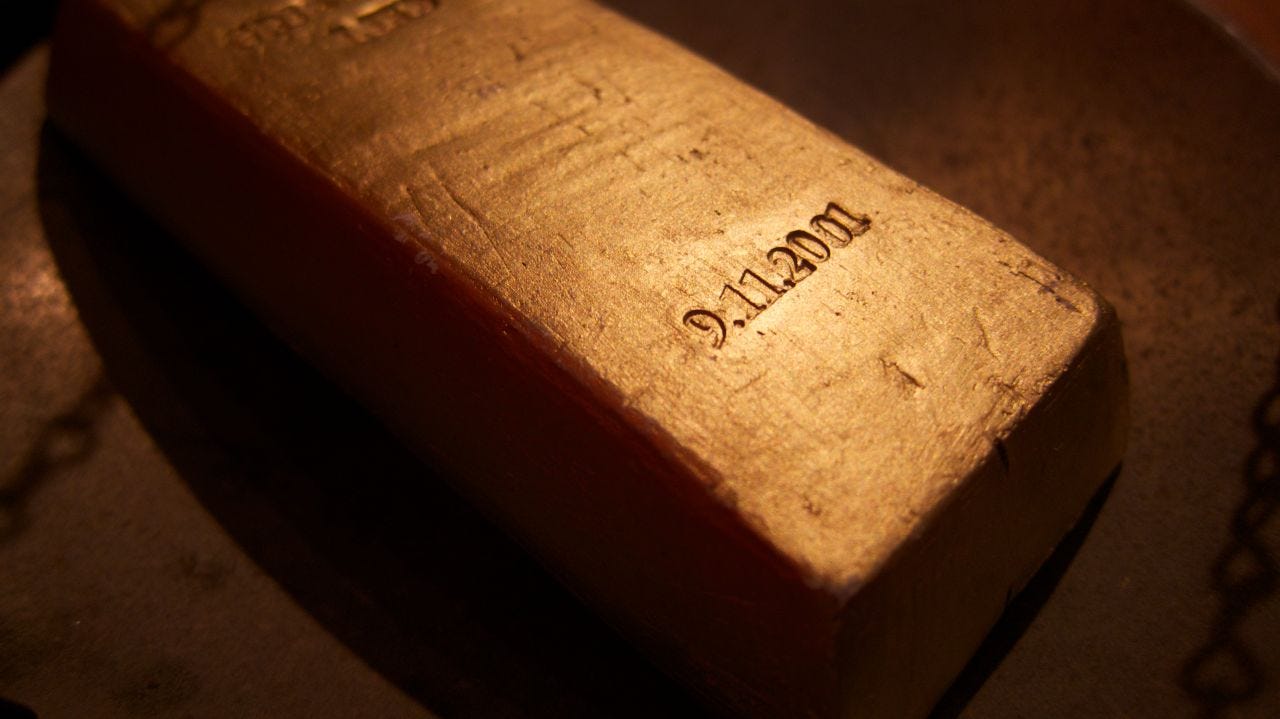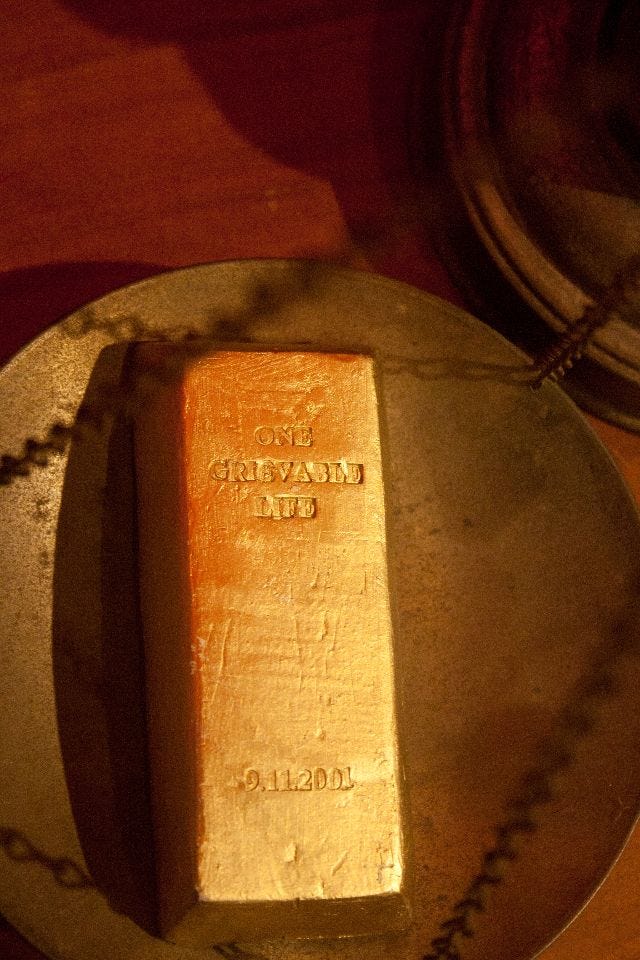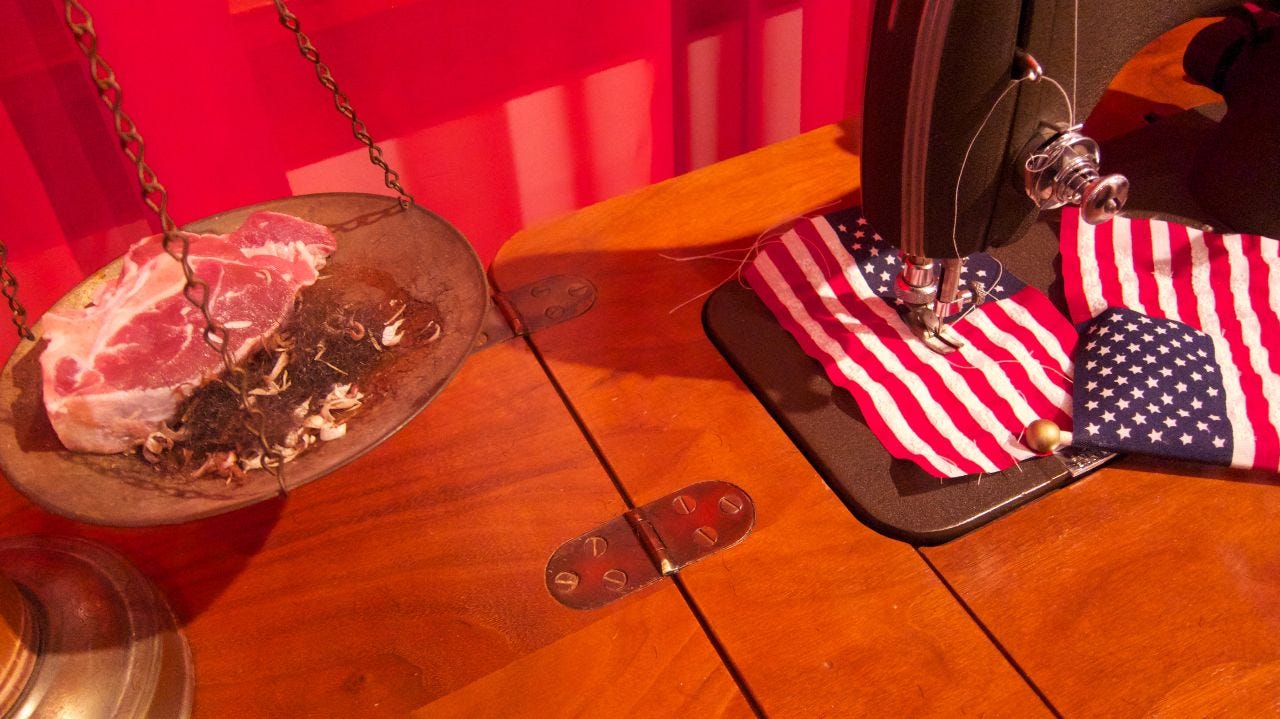by Pritika Chowdhry
“What makes for a grievable life? Who counts as human? Whose lives count as lives?
Judith Butler, “Precarious Life,” 2004.
I am a South Asian immigrant and an activist artist. I have lived in America now for 22 years. I became a citizen years ago. Quite simply, this is my home.
I made an artwork titled “Ungrievable Lives” on the 10th anniversary of 9/11 in 2011. This anti-memorial sought to memorialize the American, Iraqi and Afghani lives lost in the wars post-9/11. This year was the 20th anniversary of 9/11. And unfortunately, this work is still relevant, perhaps even more relevant now.

I REMEMBER 9/11
I was in our tiny apartment in Madison, Wisconsin. I remember receiving a panicked call from a friend in New York early in the morning of September 11, 2001. I clearly remember walking to the living room in slow motion, switching on the TV, and watching in disbelief at the events that unfolded that day. I remember it like it was yesterday.
I had migrated to the United States in 1999 on a work visa. So, my romance with America was still new at that time. America the Beautiful, America the Brave. The land of milk and honey. The land of opportunity, founded on the principles of fairness and equality.
The 9/11 attack solidified my love for America into patriotism. I saluted firefighters in the street. I would tear up seeing an American flag. I called the local US Army recruiting office and asked how I could join the US Army. I was told I couldn’t till I become a US citizen. I was so disappointed. I wanted to protect my new country.
Then one day in the parking lot of a mall, when I was wearing an Indian salwar-suit with the chunni wrapped around my head, a white American guy looked at me with pure hatred and yelled something that I, fortunately, couldn’t decipher.
It took me a few minutes to comprehend that he probably thought I was a Muslim. Even in the small, liberal university town of Madison, there was the anti-middle-eastern sentiment. I stopped wearing my salwar suits and chunnis in public after that incident.
I saw a cartoon around that time that made me laugh wryly. I cut it out and put it up on our fridge to deal with Islamophobia with a dose of humor.

I decided I would not tell people that I wasn’t Muslim, that I was Hindu. I knew that was not the point. I looked like the people “over there,” and that was all there was to it. And, I wanted to stand with Muslim folks in solidarity, to protest against the rampant Islamophobia.
POST-9/11 AMERICA
Scary reports of Indian Sikhs being shot (United Sikhs, 2019), detentions of Muslim men at airports, and widespread anti-Muslim sentiment broke my heart again and again, but I still believed in my America. America is grieving, I told myself, this will pass.
Then we came to know of Guantanamo Bay, of people being detained without any due process, interrogation practices that were only too similar to torture. And do you remember the announcements of threat levels as colors? Red was a severe risk of a terrorist attack.
In India, red is the color of the bridal saree and bindi; it signifies love, happiness, fulfillment. It is considered a beautiful color. But now, it was a color to fear.
One of my close friends’ brothers got a visit from an FBI agent for taking photos of buildings in downtown Ohio because somebody had called saying he looked “suspicious” because of the “if you see something, say something” campaign.
On March 22, 2003, I again watched TV in disbelief as George W Bush attacked Iraq with his “shock and awe” military strike. The days, months, and years that followed, with reports of high civilian deaths being termed “collateral damage,” the numbers climbing higher and higher.
In April 2004 came reports of the Abu Ghraib torture and abuse. And once again, I looked at the TV news reports in disbelief. My new country was disappointing me in ways that I could have never imagined.
Concurrently, the nation was mourning the 9/11 deaths, me included. My heart went out to the families who had lost a family member in the twin towers and Washington. My tears poured freely whenever I read stories of 9/11 families that had lost someone.
In 2006, I went back to school as an adult and got my MFA in Studio Art. I couldn’t have done this in India. I was and still am grateful for the many opportunities America has opened up for me. I went on to become a committed artist, tackling complex socio-political issues.
Before we knew it, it was 2008. The war in Iraq and now in Afghanistan was still going on. Civilian and military casualties were still going up. But the charismatic Barack Obama became President! He was charismatic, intellectual, well-spoken, a published author, a polished statesman, and African-American. Only in America, I thought, could this happen.
I was back in love with my beloved America. But this was a mature love, a love that had endured the early disappointments. Now it was a love tempered with acceptance of the complexity of America.
I couldn’t vote in 2008 because I still wasn’t a citizen but a green-card holder. I vowed that I would become a citizen as soon as my number came in the immigration process. I became a proud citizen of America on November 26, 2009. I remember that day too. Like it was yesterday. I cried tears of joy while taking the citizenship oath.
THE ANTI-MEMORIAL
In 2011, I was invited to create a memorial on the 10th anniversary of 9/11. No longer a naïve fresh-off-the-boat immigrant, I’d had a decade to observe America more deeply and think more deeply about the geopolitics of America. I knew I had to make a memorial that did more than memorializing the lives lost in the 9/11 attacks.
I had visited Ground Zero in New York a few times and was closely following the 9/11 memorial that was being built there. It was to be formally opened on September 11, 2011. The 9/11 memorial pays homage to the 2,983 victims of the 9/11 attacks.
In 2010, there wasn’t much focus on civilian casualties in Iraq and Afghanistan because of the wars on terror. This, I felt, was the counter-memory I needed to highlight. So I set about creating an anti-memorial to 9/11, even at the risk of being called an unpatriotic and ungrateful immigrant.
I decided to make an anti-memorial that examines the differential values placed on human life as it has emerged in the post-9/11 political discourse. The victims of 9/11 no doubt suffered a horrible death, and the national and international mourning that followed in the wake of 9/11 was understandable and even needed.
COUNTER-MEMORY
We lost 2,983 American lives on 9/11/2001. (9/11 Memorial, 2021)
In the first decade post-9/11, the wars in Iraq and Afghanistan had claimed about 911,931 Iraqi and Afghani lives. (Unknown News, Civilian casualties, 2011)
Now, in 2021, the number is in the millions. (The Intercept, Civilian casualties of US War on Terror, 2021)
This is the counter-memory of 9/11 that is no longer remembered. And these are the ghosts of 9/11 that still haunt 9/11. The 9/11 memorial is a site of memory or lieux de memoire, as Pierre Nora calls it, an urban palimpsest of nationalistic memories and unpatriotic counter-memories. (Nora, 1989)
Judith Butler calls the Iraqi and Afghani dead as “ungrievable” lives, for to grieve them is to declare oneself unpatriotic to the US nation and sympathetic to the “enemy.” (Butler, 2004)
“What makes for a grievable life? Who counts as human? Whose lives count as lives? — Judith Butler, “Precarious Life,” 2004.
It seems to me that the 9/11 victims became the gold standard of a grievable life. This work seeks to apprehend the value of one American life in terms of non-American lives. How does the scale tilt in terms of grievable and ungrievable lives?
On this 20th anniversary of 9/11, we have re-performed our acts of mourning and remembrance. But can we also make space to remember and mourn the hundreds of thousands of Iraqi and Afghani lives that have been lost post-9/11?
Especially now, with the sad state of affairs in Afghanistan, it is even more imperative that we open our hearts to mourning people “over there.”

With this work, I seek to perform the unpatriotic act of mourning and remembering the humanity of the ungrievable Iraqi and Afghani civilians and troops that have lost their lives in the two decades after 9/11.
Join me in this radical act of mourning by watching my 9/11 video and viewing my 9/11 anti-memorial.
Author Bio
Pritika Chowdhry is an artist, curator, and writer. Pritika’s works are in public and private collections. She has shown her works in the Weismann Museum in Minneapolis, Queens Museum in New York, the Hunterdon Museum in New Jersey, the Islip Art Museum in Long Island, Visual Arts Center of New Jersey, the DoVA Temporary in the University of Chicago, and the Brodsky Center in Rutgers University, among others.
Pritika has an MFA in Studio Art and an MA in Visual Culture and Gender Studies from UW-Madison.
See more of her artworks at www.pritikachowdhry.com.
Bibliography
About 9/11 Memorial. (2021, September 11). Retrieved from 9/11 Memorial: https://www.911memorial.org/visit/memorial/about-memorial
Butler, J. (2004). Precarious Life: The Powers of Mourning and Violence. New York: Verso.
Casualties. (2011, September 11). Retrieved from Unknown News: http://www.unknownnews.org/casualties.html
Nora, Pierre. “Between Memory and History: Les Lieux de Mémoire.” Representations, no. 26, 1989, pp. 7–24.
Chowdhry, P. (2021, September 11). Ungrievable Lives Video. Retrieved from YouTube: https://www.youtube.com/watch?v=Mq7nR8c_WUE
Chowdhry, P. (2021, September 11). Ungrievable Lives: Ghosts of 9/11. Retrieved from https://www.pritikachowdhry.com/ungrievable-lives
Civilian casualties of US War on Terror. (2021, September 11). Retrieved from The Intercept: https://theintercept.com/2018/11/19/civilian-casualties-us-war-on-terror/
United Sikhs. (2019, September 11). Retrieved from Globe News Wire: https://www.globenewswire.com/news-release/2019/09/12/1914493/0/en/UNITED-SIKHS-RELEASE-TIMELINE-OF-ATTACKS-AGAINST-SIKHS-ACROSS-AMERICA-SINCE-SEPT-11-2001.html

